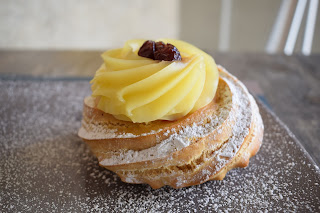Alberto Marvelli - Rimini's Good Samaritan
Heroic deeds helped victims of bombing raids
Alberto Marvelli, who came to be seen as a modern day Good Samaritan after risking his life repeatedly to help the victims of devastating air raids in the Second World War, was born on this day in 1918 in Ferrara. He died in 1946 at the age of only 28 when he was struck by a truck while riding his bicycle but in his short life identified himself to many as a true hero. He was beatified by Pope John Paul II in 2004. Marvelli's acts of heroism occurred mainly in Rimini, his adopted hometown, which suffered heavy bombing from the Allies due to its proximity to the Gothic or Green Line, a wide belt of German defensive fortifications that ran across the whole peninsula from La Spezia to the Adriatic coast. As well as giving aid and comfort to the wounded and dying and to those whose homes and possessions had been destroyed, Marvelli also rescued many Rimini citizens from trains destined for concentration camps. Alberto was the second of six children born to Luigi Marvelli and Maria Mayr. Growing up, he was set a powerful example by his mother, who always kept open house for the poor and regularly gave away food intended for her own family. Read more…
_____________________________________
AC Milan pay record fee for Ruud Gullit
Signing of Dutch star sparked new era of success
A new golden era in the history of the AC Milan football club effectively began on this day in 1987 when the club agreed a world record transfer fee of £6 million - the equivalent of about £14.5 million (€16.8 million) today - to sign the attacking midfielder Ruud Gullit from the Dutch champions PSV Eindhoven. The captain of The Netherlands national team that would be crowned European champions the following year, Gullit was regarded as one of the world’s best players at the time and his arrival in Milan caused huge excitement. Thousands of Milan supporters turned out to greet him on the day he arrived in the city, so many that the car taking him from the airport to the club’s headquarters needed a police escort with sirens blaring in order to forge a path through the crowds. Those fans correctly sensed that Gullit’s signing would bring a change of fortunes for the rossoneri after a dark period in their history. Traditionally one of Italian football’s most powerful clubs, Milan had won the scudetto - the Italian championship - for the 10th time in 1979 but the following year were embroiled in the match-fixing scandal known as Totonero and as a punishment were relegated to Serie B - the second division - for the first time in their history. Read more…
___________________________________
Benedetta Cambiagio Frassinello – Educator
Nun who promoted the rights of girls to a quality education
The Feast Day of Saint Benedetta Cambiagio Frassinello, who founded the Benedictine Sisters of Providence, is celebrated on this day, the anniversary of her death in 1858. Benedetta carried out pioneering work by rescuing poor and abandoned girls and promoting their rights to a good education. She was made a saint by Pope John Paul II in 2002. Benedetta was born in 1791 in Genoa but her family later moved to Pavia. As a young girl she wanted to consecrate her life to God, but obeying her parents’ wishes, she married Giovanni Battista Frassinello when she was 24. After two years of marriage, during which they had no children, they decided to live a celibate life and stay together as brother and sister. They both later joined religious orders but Benedetta was forced to leave and return to live in Pavia again because of ill health. When she was well again she dedicated herself to the education of the many young girls who had been abandoned or who were at risk in the area. There was so much work that the local Bishop asked her husband to leave his religious order to help her. She was helped by young women volunteers. Read more…
___________________________________
Angela Merici – Saint
Nun dedicated her life to educating girls
Angela Merici, who founded the monastic Ursuline Order, was born on this day in 1474 in Desenzano del Garda, then part of the republic of Venice. The Ursulines are the oldest order of women in the Roman Catholic Church dedicated to teaching and were the first to work outside a convent in the community. Merici was orphaned at the age of 15 and sent to Salò to live in the home of an uncle, where she became deeply religious and joined the Third Order of Saint Francis. She returned to Desenzano after the death of her uncle when she was 20 and found that many of the young girls in her home town received no education and had no hope of a better future. Merici gathered together a group of girls to teach the catechism to the young children. Then, in 1506, while praying in the fields, she had a vision that she would found a society of virgins in the town of Brescia. It is claimed Merici became suddenly blind when she was on the island of Crete on her way to the Holy Land but continued on her journey. She is believed to have been cured of her blindness on her return, while praying at exactly the same place where she had been afflicted. Read more…
Booking.com
.jpg)
.jpg)

.jpg)
.jpg)


.jpg)

_Rom,_Bibl_Vat_-_Codici_Ottoboniani_latini_3113,_fol8.jpg)




.jpg)
